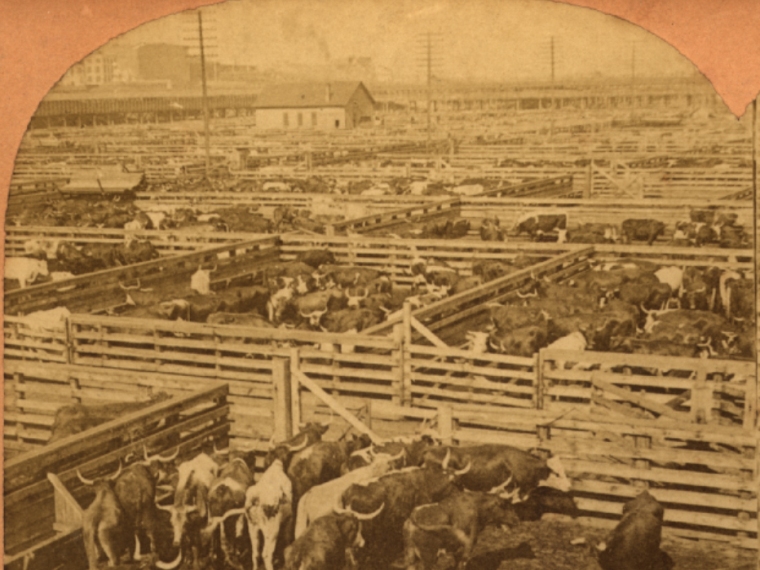In 1889, Chicago annexed the Town of Lake to which the stockyards had fled in 1865. Chicago again began agitating to stop pollution. Progress was slow.
The Sanitary District of Greater Chicago reversed the flow of the river in 1900, meaning the stockyards were now downstream, instead of upstream of the Loop. This was a huge improvement. The meatpackers’ decisions to sell manure and offal for fertilizer instead of dumping them in the river helped. Treatment plants built by the District also did a great deal to solve the problem.
The Chicago Health Department attempted to inspect the meatpackers to ensure sanitary conditions. The Department was too small to inspect the powerful companies that were producing 80% of the country’s meat. There was limited federal inspection starting in the 1890s in response to European countries threatening to ban American meat. Diseased cattle were isolated and removed from the food supply.
A pivotal moment came in 1906 when Upton Sinclair published The Jungle. This fictional bestseller portrayed brutal working conditions and unsanitary practices in the yards. The unsanitary conditions immediately caught the public’s imagination and Federal meat inspection of the plants began. Little was done immediately about the working conditions, Sinclair’s main concern.
After World War II, the stockyards went into a quick decline. The railroads were less interested in carrying lightweight demanding freight such as livestock and passengers. History of the Yards says that by 1953 over 90 percent of the animals arrived by truck. The growth in trucking and mechanical refrigeration made it more economical to slaughter livestock closer to where it was raised, and ship the meat.
Several of the major packers moved out in the 1950s. The yards finally closed in 1971. A few small slaughterhouses remained, as did related food businesses.



Add a comment to: Union Stockyards, Part 3: Technology That Changed Chicago